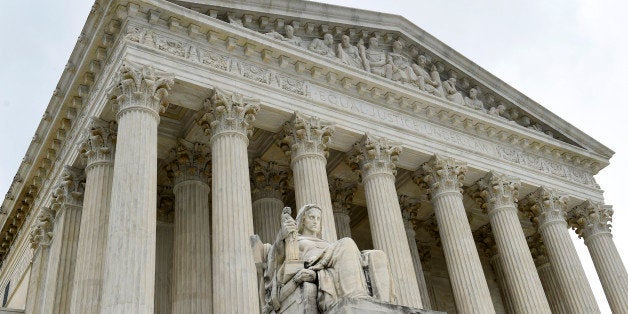
The first Monday in October marks the beginning of a new term for the U.S. Supreme Court and a good time to reflect on the state of the nation's judicial branch of government. This year the capacity of the federal court system to keep up with its caseload is seriously in question. Judicial vacancies are rising and the Senate is likely to confirm the smallest number of nominees since 1953. The confirmation of federal judges by the Senate has all but come to a halt. Furthermore, the pattern of behavior by senators to slow the process appears quite deliberate. Critics have charged that the delays in the process are intended to deny President Obama the ability to appoint judges in the last two years of his term, unlike the pace of confirmations experienced by other presidents at this point in their tenure.
How has this happened? Judicial nominations proceed through the Senate in a sort of formal dance, in which individual senators have an unusual role. By tradition the president consults senators in whose states the judicial vacancies occur prior to nominating anyone. Then the nominees go before the Senate Judiciary Committee for hearings and a vote. But individual senators can delay a Senate Judiciary Committee hearing indefinitely without stating why. Some have done so even when they agreed to the nomination in the first place. A nomination can be held hostage due to another matter altogether or another piece of legislation. After the hearing and the committee vote, the Senate majority leader is then supposed to schedule a floor vote, and that too can be delayed almost indefinitely.
In fact, during the current two-year session of Congress which began in January, only five judges were confirmed by the Senate in the first eight months -- the slowest pace since 1953. A sixth judge was confirmed in September, the first nominee in 2015 from a state with a Democratic senator--Missouri's Claire McCaskill. These weren't controversial nominees. All six were voted out of committee with bipartisan support and ultimately confirmed unanimously on the Senate floor, and yet were forced to wait an average of 80 days for a floor vote.
Such a slow confirmation rate is without precedent. Most recently, when Republican president George W. Bush had two years left, the Democratic Senate confirmed 68 judges. During the last two years of Democratic president Bill Clinton's term in office, the Republican Senate confirmed 73 judges. In both cases, the nominees confirmed in the last two years accounted for about one-fifth of the total for each president. At the current snail's pace, less than one in 20 of Obama's confirmations will come during his final two years.
What's at stake? A situation where "justice delayed is justice denied." While the Supreme Court is rightly regarded as the pinnacle of the US legal system, it is nonetheless a very small part of it. Its nine justices often set landmark precedents with their decisions, or at least clarify existing law, but typically the court now handles only 80 cases or less per term. In contrast, a total of 376,536 civil and criminal cases were filed in US district courts in 2014. Of those, the majority -- nearly 300,000 -- were civil cases. That year, about 55,000 cases were appealed from the district courts to the 11 US Courts of Appeals. During the last Supreme Court term, 7,376 cases were appealed to the Supreme Court. (It is important to remember that cases generally don't reach the appeals stage in the same year they were originally filed.) In other words, on average about one-tenth of one percent of appeals cases make it all the way to the top of the judicial branch -- making the lower federal courts critical decision-makers.
So what matters to the average person or business with a case in the federal courts is whether the lower courts are, in fact, able to dispense justice in a timely manner with so many empty seats on the bench. And that is where the majority in the Senate has strangled the process by running up the number of judicial vacancies. Since January 1, that number has increased by 56 percent, from 43 to 67.
When the courts lack enough judges, a judicial emergency is declared by the Judicial Conference of the United States, the national policy-making body for the federal courts created by federal law. A judicial emergency is a situation defined by strict criteria -- it is not just an off-the-cuff opinion. Since January 1, the number of such declared emergencies has increased by 158 percent, from 12 to 31, affecting districts with millions of people. Two judicial nominees pending for over six months have not yet had a confirmation hearing -- although if confirmed, both would end a judicial emergency.
As a country that presents itself as a leader among nations when it comes to rule of law, the corruption of the process of selecting judges in a partisan manner ought to be an international embarrassment. And the only way that embarrassment will motivate change is if American voters organize to call on their senators to end the charade of pretense that surrounds confirming judges today -- the pretense that in effect says, "Nothing to worry about, just move along." What needs to move along is the Senate confirmation process with a much greater degree of transparency, or the damage to our system of justice and, more importantly, to those individuals depending on it, will only intensify.
